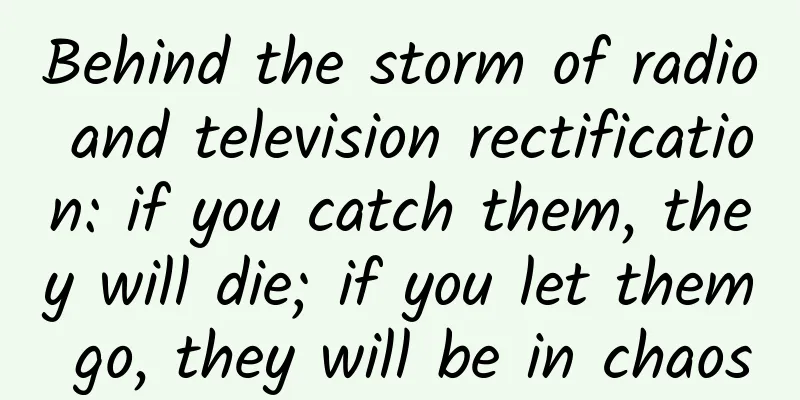Can pets cause lung cancer? People who keep such pets at home should pay attention...

|
How does the doctor know what disease I have? To diagnose a disease, the doctor needs to find key information from the patient's symptoms and test data, and then use scientific thinking methods to repeatedly infer and verify this information, and finally find the root cause of the disease. In a sense, an excellent doctor is a "super detective" in the field of health. The confirmation of each case will go through a series of ups and downs and unexpected and surprising explorations. Recently, a 49-year-old man had a rather tortuous experience in seeing a doctor, which can be regarded as a very exciting medical reasoning case... The man is a painter. He had been having health problems for the past two weeks. The main symptom was coughing. He didn't take it seriously at first, but recently he started coughing up blood intermittently. He was terrified. So he rushed to the hospital and went to the emergency room. 01 Thick fog Coughing up blood? Lung cancer? Doctor Lao Ma from the emergency department carefully inquired about the patient's medical history, the course of coughing up blood, and some of the conditions after coughing up blood. He then carefully examined the patient's body and asked the resident doctor beside him, "The patient's main symptom is coughing. Although the amount of blood coughed up is not much, we should not be careless. For a man of this age, what disease should we be most vigilant about for coughing up blood? Do you know?" "Bronchiectasis, squamous cell lung carcinoma, tuberculosis, pneumonia, pulmonary embolism, heart failure, pulmonary hypertension..." The resident physician quickly recited all the diseases that could be thought of that could cause coughing up blood. Lao Ma nodded slightly and said, "I have basically mentioned the common diseases that cause hemoptysis. Now the patient is not coughing up a lot of blood, and his vital signs are stable. We need to find out the cause of the hemoptysis as soon as possible. First, we need to do a chest CT scan, and then take blood for some related tests." "Is it lung cancer, doctor?" the patient asked anxiously. Did he just hear what the resident doctor said? Old Ma thought to himself, damn it, next time I take the resident doctor exam, I can't be around patients. "There are many reasons for coughing up blood. In addition to lung cancer, some benign diseases can also cause coughing up blood, so we need to do an examination to find the cause." Lao Ma said, "We just measured your temperature, 38 degrees Celsius, a little feverish, and there were some rales in the lungs when auscultating. We can't rule out lung inflammation, such as pneumonia. Severe coughing can also cause bleeding. Don't be too nervous for now." "Let's do a chest CT scan first." Lao Ma wrote out a checkup list and asked the patient to go to the CT room for a checkup. The chest CT scan went smoothly. After the scan, the patient returned to Lao Ma, who frowned as he looked at the chest CT scan of the patient on the computer. The patient saw it and was anxious. " There is a space-occupying lesion in the lung, but the nature is uncertain. Further examination is needed. " Lao Ma looked up at the patient and said calmly, "The image shows that there is a space-occupying lesion in the right lower lobe of the lung and multiple nodules in the lung. Because chest CT scan is an imaging examination, it is impossible to draw a qualitative conclusion, so it can only be said that it is a space-occupying lesion, which means that there is something here. What exactly is it and whether it is the lung cancer you are worried about, we still need a pathological examination to confirm it ." After hearing this, the painter was completely dumbfounded. Seeing that he was the only one who came without any family members, Lao Ma was worried that the words in the report would cause the patient to be overly nervous and worried, so he spoke more tactfully. But those words were actually very objective. The painter was so distraught that he called his family to come and arrange for hospitalization. The person who came to the hospital was the painter's wife, who had never thought that the cough and blood would be "lung cancer". "Doctor, is this 'lung cancer' in the early or late stages?" the painter's wife asked Lao Ma. "It's not certain yet that it's lung cancer," Lao Ma emphasized again to the painter and his family, "You should go to the hospital first for further examination. Okay, don't think too much about it." Although Lao Ma said this himself, he was still worried. At this age, he was coughing and coughing up blood. The chest CT scan showed a space-occupying mass, so lung cancer could not be completely ruled out. The patient also had a fever, so there was a high possibility of secondary infection. After completing the formalities, the patient was admitted to the Department of Respiratory Medicine, and underwent relevant examinations such as routine blood tests, complete blood biochemistry, coagulation analysis, and tumor markers. 02 Worried Is it lung cancer? After reviewing the patient's chest CT scan, the respiratory physician also believed that the possibility of lung cancer could not be ruled out. After all, the chest CT scan and clinical manifestations did not support bronchiectasis, tuberculosis, and common pneumonia. However, the patient's tumor markers were not abnormally elevated and were all within the normal range. Could there be other reasons? This is actually explainable. Tumor markers in patients with malignant tumors are not 100% elevated. Many patients with malignant tumors have normal tumor markers. Malignant tumors cannot be ruled out simply because tumor markers are normal . The senior doctor said this during the ward rounds. Of course, this sentence cannot be heard by the patient to avoid further irritation. Although lung cancer was suspected, further differential diagnosis was still needed. The patient also has fever, and the routine blood test shows that the total white blood cell count is also a little high. There are rales on auscultation of the lungs, which needs to be differentiated from inflammatory lung diseases. " Could it be bronchiectasis, tuberculosis, lung abscess, or pneumonia? " asked the resident. However, the typical manifestation of bronchiectasis is chronic cough with large amounts of purulent sputum and repeated hemoptysis; in addition to cough, sputum, chest pain, hemoptysis, and dyspnea, most people with pulmonary tuberculosis also have symptoms of tuberculosis poisoning such as low fever, fatigue, and night sweats; lung abscess usually has an acute onset, with chills and high fever, with a body temperature of 39 to 40°C, accompanied by cough, coughing up mucus or mucopurulent sputum, and patients with severe conditions will also cough up large amounts of purulent and smelly sputum; ordinary bacterial pneumonia may suddenly start with chills, followed by high fever, presenting a retained fever type, often accompanied by cough, sputum, headache, muscle aches all over the body, and loss of appetite. After examination, the patient's body temperature was monitored as low fever after hospitalization, without high fever, cough, or coughing up purulent sputum. The general condition was good. Combined with the findings of lung CT, comprehensive consideration does not support the diagnosis of bronchiectasis, lung abscess, and pneumonia . "But can the possibility of pulmonary tuberculosis be ruled out? The chest CT before the patient was admitted to the hospital showed a mass in the lower lobe. Although there were multiple nodules at the same time, there was no calcification, cavitation, or pleural effusion. In terms of symptoms, apart from a low-grade fever, there was no obvious fatigue or night sweats. Repeated sputum smears were taken, but no acid-fast bacilli (which can be understood as tuberculosis bacilli) were found. The diagnosis of pulmonary tuberculosis is not supported for the time being." The senior doctor analyzed. "Let's do another chest CT scan. This time we'll need a plain scan and an enhanced scan." The so-called enhanced scan is to inject contrast agents into the patient's blood vessels during a CT scan. The lesion site may show abnormal enhancement, which can be distinguished from normal tissue, so that the lesion can be found . If the patient has a malignant tumor, then the tumor should have abundant blood vessels, because malignant tumor cells often have vigorous metabolism, which requires abundant blood supply to nourish. If there is abundant blood supply, the contrast agent will also gather here, and the CT can see it and help determine whether it is a malignant tumor. If it is a benign tumor or other lesions, the blood supply in the mass is not so rich, and naturally not as much contrast agent enters, so the image shown is different from that of a malignant tumor. This is the power of enhanced CT examination. "Enhanced CT is so good, why didn't we do it at the beginning, but wait until now? The painter's wife asked, why didn't the emergency doctor do an enhanced CT scan for us directly?" the painter said puzzledly. The resident doctor explained: "CT enhanced scans first require contrast agents, some patients may be allergic to contrast agents, and contrast agents may also damage the kidneys. Secondly, the examination costs are higher. Finally, not all diseases require enhanced scans. Therefore, the relatively efficient and convenient method adopted by emergency doctors is lung CT plain scan. Now, the review of lung CT plain scan + enhancement can not only further identify, but also observe the development of the disease." After the explanation, the painter and his wife signed their consent for an enhanced chest CT scan. The test results came out that afternoon - lung cancer had not been completely ruled out, and further clinical investigation was recommended . The resident and senior doctors carefully read the patient's film, and the image did look like lung cancer, but before the pathological diagnosis, no one dared to say that it was lung cancer. Because once it was lung cancer, the next step was a long process of diagnosis and treatment. The painter himself was also very worried and came to the doctor's office several times a day to ask about the test results. The resident doctor told him the truth: lung cancer was suspected, but it was not certain. "You have to tell me the truth and don't hide it. Although I am afraid, I can accept it." The painter stared into the resident's eyes and asked him in a pleading tone. The resident doctor had no choice but to open the computer report system and let the patient directly look at the conclusion of the report. "You see, there is no clear diagnosis of lung cancer here. Without pathological tissue examination, there is no way to confirm lung cancer ." "Then how do we obtain pathological tissue?" asked the painter. "For some patients, we can obtain the lesion tissue through bronchoscopy for pathological examination, but the lesion in your lung is located lower and outside, and it is difficult for the bronchoscope to reach the lesion site, so we have to obtain the lesion tissue through lung puncture biopsy, the resident doctor said. Because the mass in your lung is closer to the back, we can directly use a needle to pierce through the back, pierce into the mass, and take out a few pieces of tissue for pathological examination. If we find cancer cells inside, it can be confirmed that it is a malignant tumor ." The resident doctor gestured with his hands as he spoke, simulating the puncture. This was a very common action, but it frightened the painter. The painter was stunned, his throat moved, and his face turned pale. Obviously, he was really scared. "Can we confirm the diagnosis without puncture?" After a while, he came to his senses and asked the resident doctor with an unnatural look. "I have been afraid of pain and blood since I was a child. If I have to undergo surgery, it will be very... very difficult." The resident doctor was "in tears and laughter". He was so scared by a lung puncture. If you really need to have an operation to remove the tumor, it will cost you your life. Of course, the patient couldn't know these words. They were all what the resident doctor thought in his heart. "We have anesthesia, it won't hurt." The resident doctor tried to convince the patient to agree to lung puncture. "I heard that there is something called PET-CT , which can also diagnose whether it is a malignant tumor, is that right?" The patient did not take over the resident doctor's words, but asked the question directly. The resident doctor groaned and said, "PET-CT is a non-invasive test that can help determine whether the tumor is benign or malignant and whether there is distant metastasis, but it is not 100% accurate . It is also a self-funded project and is expensive, costing about 10,000 yuan." "Can I do this first? If this can rule out malignant tumors, then there is no need for puncture, right?" asked the painter. " Even if you do the PET-CT, you may still need a lung puncture, " said the resident doctor. The painter hesitated for a moment and said, "I decided to do this check first." The resident doctor consulted the senior doctor and said that the patient had requested a PET-CT scan and was very reluctant to undergo lung puncture. The senior doctor smiled bitterly and said that many patients were like this, so let him do a PET-CT scan, which would have certain clinical significance for our diagnosis and differential diagnosis anyway. That morning, the patient was arranged to undergo a PET-CT examination. After the painter was admitted to the hospital for anti-inflammatory treatment, he still had a low fever, which further confirmed the resident doctor's idea that the patient was most likely lung cancer. This fever should be tumor-related fever, not infectious fever, otherwise why would the patient still have a fever after taking antibiotics ? 03 Adding insult to injury? Lung cancer is still undetermined, and AIDS appears again? During the ward round, the senior doctor asked: "There is no pathology in the lung mass for the time being, but the patient has a fever and the anti-inflammatory treatment is not effective. What should we consider? We cannot just focus on the nature of the lung mass." "The causes of fever are divided into two categories: infectious and non-infectious. Infectious fever is further divided into bacterial infection, fungal infection, viral infection and infection by rare pathogens; non-infectious fever includes immune diseases, connective tissue diseases, tumor fever, absorption fever, drug fever, central nervous system fever, etc.," said the senior doctor. " Continue to complete the examination, and check HIV as well. " HIV? The resident was puzzled. The senior doctor explained: "I always feel that this patient is not that simple. In the absence of a pathological diagnosis, we can only rule out certain diseases through auxiliary examinations. We should not be obsessed with the tumor. If the patient is infected with HIV, it is likely an infectious disease. We don't need to persuade the patient to do a lung biopsy." The resident doctor nodded slowly and followed the senior doctor's advice on the ward rounds. Soon, the PET-CT results came back, and the conclusion did not support malignant tumors . The results of the PET-CT examination are still quite instructive. During the examination, the doctor will also inject the patient with intravenous contrast agent. Malignant tumor cells have very active metabolism and their ability to absorb contrast agent is many times higher than that of normal cells. After the contrast agent is absorbed by the malignant tumor cells, there will be obvious "bright spots" on the image. If a high concentration of contrast agent is seen in a certain place on the film, the possibility of malignant tumor is very high. But there were no obvious bright spots on the PET-CT of this patient. This result made the painter excited for a long time. He finally showed a long-lost smile, which was the first smile in more than a week in the hospital. What happened? The chest CT showed a space-occupying lesion in the lungs and multiple nodules, but the PET-CT did not support lung cancer. What was the cause of the patient's disease? In terms of clinical manifestations, the patient was a middle-aged male with repeated coughs, mild hemoptysis, persistent low fever, and a mass in the lungs. Routine laboratory tests were all normal. "The patient doesn't want the lung puncture biopsy, which has the most diagnostic value. Since he doesn't want to, he must sign and keep a clear record to avoid a lawsuit later," the senior doctor said. The resident doctor took the "Informed Consent Form for Refusal of Lung Biopsy" to the painter's bedside and communicated with him again, saying: "PET-CT is not 100% accurate and there is a possibility of missed diagnosis. The most valuable examination is still the pathological examination of the puncture biopsy. If you want to find out whether it is lung cancer, you must have a pathological diagnosis ." The painter sighed and decided not to do the piercing. The painter's wife was also there. She obviously disagreed with the painter's idea, but she couldn't change his decision. After the painter signed the document and the resident doctor was about to leave, the painter's wife said, "You have been hospitalized here for 10 days. The pigeons at home must be starving. You can't take care of those little creatures anymore." The painter smiled bitterly and said, "I am already in this state, how can I care about them? Let them fend for themselves." The two ordinary conversations stunned the resident doctor. He turned around and stared at the painter and his wife. "What did you just say? Can you say it again?" 04 The clouds are clearing and the sun is shining? Is it all the pigeons’ fault? The painter and his wife were obviously frightened by the resident doctor's behavior. They looked at each other in bewilderment. The painter smiled and said, "We are just talking about our pigeons. What's wrong, doctor?" "You have pigeons at home? The resident doctor's eyes widened, as if he had discovered a new world." The painter looked puzzled, nodded slightly, and said, "Yes, I raise a few pigeons. Is there any problem?" The resident doctor suddenly understood and said, "That's right," then he smiled and turned away. The painter and his wife were left bewildered. The resident doctor told his superior doctor about the patient's family raising pigeons. The superior doctor seemed to "suddenly understand" and his eyes lit up. He said, " Arrange for him to be tested for cryptococcal antigen as soon as possible ." Cryptococcus is a fungus that often survives in soil and pigeon feces. If inhaled into the respiratory tract, it may cause cryptococcal infection, such as cryptococcal pneumonia and cryptococcal encephalitis. A few years ago, the respiratory department admitted a patient with pneumonia, which was later confirmed to be cryptococcal pneumonia. The patient's family also raised pigeons. That's why they are so excited. If the patient really has cryptococcal pneumonia, then this can explain everything. Cryptococcus can cause lumps in the lungs and can also cause the patient to cough up blood and have a fever, which is often confused with a tumor. This is why chest CT has always indicated lung cancer, but PET-CT believes it is not a tumor. "The patient is very likely to have cryptococcal pneumonia!" Just when the doctors thought they had the key information, another doctor said, " The patient's HIV report is out, and it's negative. " HIV negative. This is a good thing for the patient, but it is a blow to the senior doctors and residents. Because cryptococcal pneumonia usually occurs in immunocompromised patients, the most common of which is AIDS patients. Generally healthy people are unlikely to be infected with cryptococcus, otherwise so many pigeon breeders would have suffered. "People with normal immunity may also develop cryptococcal pneumonia." The senior doctor said slowly, and then added, " But the probability is about one in a hundred thousand. " The resident doctor was immediately discouraged. It seemed that the patient's pigeon breeding was just a coincidence. The cause of the patient's lung mass, fever, and hemoptysis was still unknown, and further examination was needed. "In any case, let's check the cryptococcal antigen first, just in case we win the lottery." The senior doctor joked. The patient was much happier when he heard the doctor suspected that he had cryptococcal pneumonia, at least it was not lung cancer. He also cooperated with the blood test. The process of waiting for the results is long. The results are out. Negative. The patient's cryptococcal antigen was also negative. If the patient really had cryptococcal infection, then there should be antigens of this fungus in the blood. If positive, then the diagnosis can almost be confirmed. But now the result is negative, which means that the patient may not have cryptococcal pneumonia at all. The resident doctor also accepted this fact. It is too easy to identify a disease simply by raising pigeons. The patient was disappointed again when he learned that it was not cryptococcal pneumonia. 05 confusing What disease is it that he has? What kind of disease would that be? "We still highly suspect lung cancer. We suggest not to waste time, but to get the pathology as soon as possible, clarify the diagnosis, and perform chemotherapy if necessary or surgery if necessary." The resident doctor advised the patient again. If it is lung cancer and the diagnosis is delayed, and if it metastasizes, it will be very difficult. Many people may only have half a year to live. If diagnosed early, surgical resection may be curative . This is the truth about lung cancer. The resident doctor spent nearly an entire afternoon talking to the patient and trying to persuade him. "Percutaneous lung puncture biopsy is a very mature technology. We can perform the puncture under the guidance of CT to ensure safety. As long as we get the pathological tissue test, it will be clear at a glance whether it is a god or a ghost, and we don't have to guess." said the resident doctor. The patient's wife also chimed in, "Just listen to the doctor. He's certainly doing this for our own good. The puncture is nothing serious." After much deliberation, the patient finally decided and agreed to undergo percutaneous lung puncture. The next morning, in the CT room, a puncture was performed under the guidance of CT and the pathological tissue was successfully removed. The whole process went smoothly and the patient was safe and sound. On the second day after the puncture, the patient still had fever and coughed up blood from time to time. The results came out the next afternoon. The result surprised everyone... 06 Final verdict One in 100,000 The puncture results showed that there were no cancer cells or tuberculosis bacteria in the pathological tissue. However, a large number of cryptococcal spores were found in the pathological smears, and the PAS stain was positive. The commonly used pathological smear staining method for cryptococcal disease is this PAS staining. Now this staining is positive, which means that cryptococci are growing in the pathological tissues clamped out. Moreover, the pathologists have directly seen the growth of many cryptococcal spores. Now we can finally conclude: the patient was clearly diagnosed with cryptococcal pneumonia . After a round of investigation, it turned out that the pigeons in the patient's home were not innocent. It was probably because their feces contained cryptococci. The patient was a painter and a pigeon lover. He often came into contact with pigeons, so it was inevitable that he would come into contact with pigeon feces. Once these cryptococci were inhaled, they might become ill. But the patient does not have AIDS, blood system diseases, diabetes and other factors that affect immunity. The patient's immunity is normal. In theory, it is not easy to be infected with cryptococcus and get sick. That's right, the probability is one in a hundred thousand . So what happened to the negative result of the blood test for cryptococcal antigen? It turns out that in non-HIV simple pulmonary cryptococcal infection patients, the positive rate of cryptococcal antigen test is low, and it is easy to detect false negatives, and other tests are needed to assist. It is really fortunate that the puncture was done! The patient was relieved when he heard that he was finally diagnosed with cryptococcal pneumonia. Fortunately, it was not lung cancer, otherwise he really didn't know what to do. He already had several friends who were diagnosed with cancer, and the situation was not optimistic. The doctor above instructed me to use fluconazole, an antifungal drug that is effective against cryptococcus. " Let's arrange a lumbar puncture and a cranial MRI, " said the senior doctor. Why? The resident doctor was a little confused. "You can see that the patient has not been in good spirits these past few days, and he complains of headaches from time to time. Cryptococcus prefers to infect the central nervous system in addition to the lungs. Patients with cryptococcosis must rule out the possibility of brain infection, so a lumbar puncture is performed to extract the patient's cerebrospinal fluid for testing to see if there is cryptococcus in it. If there is no cryptococcus, that's the best. If there is, then the treatment must be more intensive, and the prognosis will be worse." "We can't afford to make any more mistakes. We must have a clear grasp of the enemy's situation. Although the patient's headache and fatigue may be caused by poor sleep and fear, we must also be alert to the possibility of brain infection. Go ahead and complete the examination." said the senior doctor. After hearing this, the resident doctor felt a pang in his heart, thinking that there might really be a brain infection, which would be tragic. Since the patient learned that it was a fungal infection and that it was treatable, his mood has improved a lot. He also agreed to all the tests he had to undergo. Fortunately, the results were all normal . After two weeks of fluconazole treatment, the patient's symptoms were significantly relieved. He no longer coughed up blood. A chest CT scan showed that the patient's lung mass had shrunk. At this moment, the patient's condition becomes truly clear. “When can I stop taking the medicine?” the patient asked. "The treatment course for cryptococcal infection is long and may take several months. The medication can only be stopped after all clinical manifestations disappear and a chest CT scan shows that the lesions are completely absorbed. This prevents recurrence," said the senior doctor. These are not problems anymore, it’s better than lung cancer, right? As for what happened to those pigeons, we won't gossip about it. I guess they were stewed and eaten... Author: Li Hongzheng (medical science writer) Reviewer: Li Lan, former deputy chief physician of the Oncology Department of Jilin Provincial People's Hospital |
<<: Talk: Scientist from Zhejiang Province - Xu Guangxian: "Father of China's Rare Earth"
>>: Do refined carbohydrates pose health risks? How should we “eat well”?
Recommend
What? Sea urchins have teeth? They chewed through more than 40 steel columns?
In 1953, an astonishing report appeared: in Calif...
Xiaohongshu KOL promotion: the secret of note flow limitation!
After writing "Little Red Book KOL Promotion...
Douyin private domain solution and four core capabilities
01 Positioning and value of Douyin private domain...
The world's female technology community (Part 2): Caste system and growth under the digital twilight
At the first stop of our journey to explore women...
5G mobile phone's "n" troubles, when will full-band support be solved?
Regarding the troubles of 5G mobile phones in fre...
What would you most like to do if it snows? Do science popularization! | Expo Daily
Your best "insider" in the scientific c...
This formula teaches you how to create popular screen-sweeping cases!
On the Internet, we should regard advertising con...
World Noise Day | Is your memory getting worse? It may be because of noise
On World Noise Day, Dongdongmiao will help you un...
What imprints of traditional culture are there in aerospace engineering?
On July 12, 2024, Cui Wanzhao, a researcher at th...
If you want users to actively help you spread the word, please do these things first!
When doing operations , one of the most important...
Breaking news! US District Court urgently stops WeChat from being removed from the platform
Late at night on September 20th, Beijing time, ac...
How complex is Jack Ma’s Internet finance empire?
Zhejiang Ant Financial Services Group Co., Ltd. (...
A complete analysis of Tik Tok’s content operations, just read this article!
Just yesterday, Douyin announced that its daily a...
"Half lake, half fire", here hides the most beautiful winter in China
Jingpo Lake is the largest volcanic barrier lake ...
Practical information: A first look at the iOS 9 Contacts framework
[[155660]] iOS 9 shows many new technologies and ...









